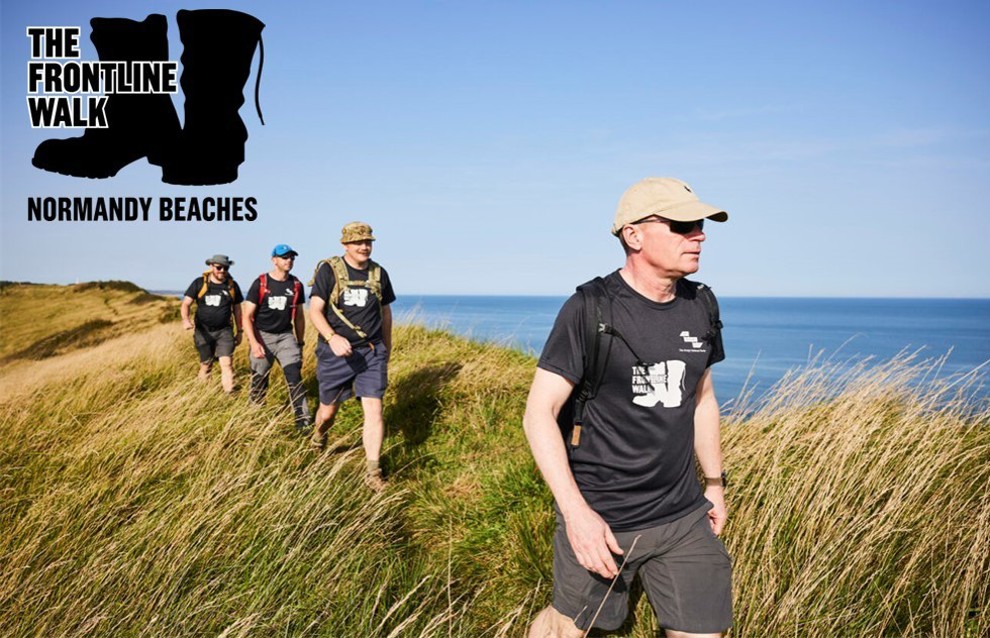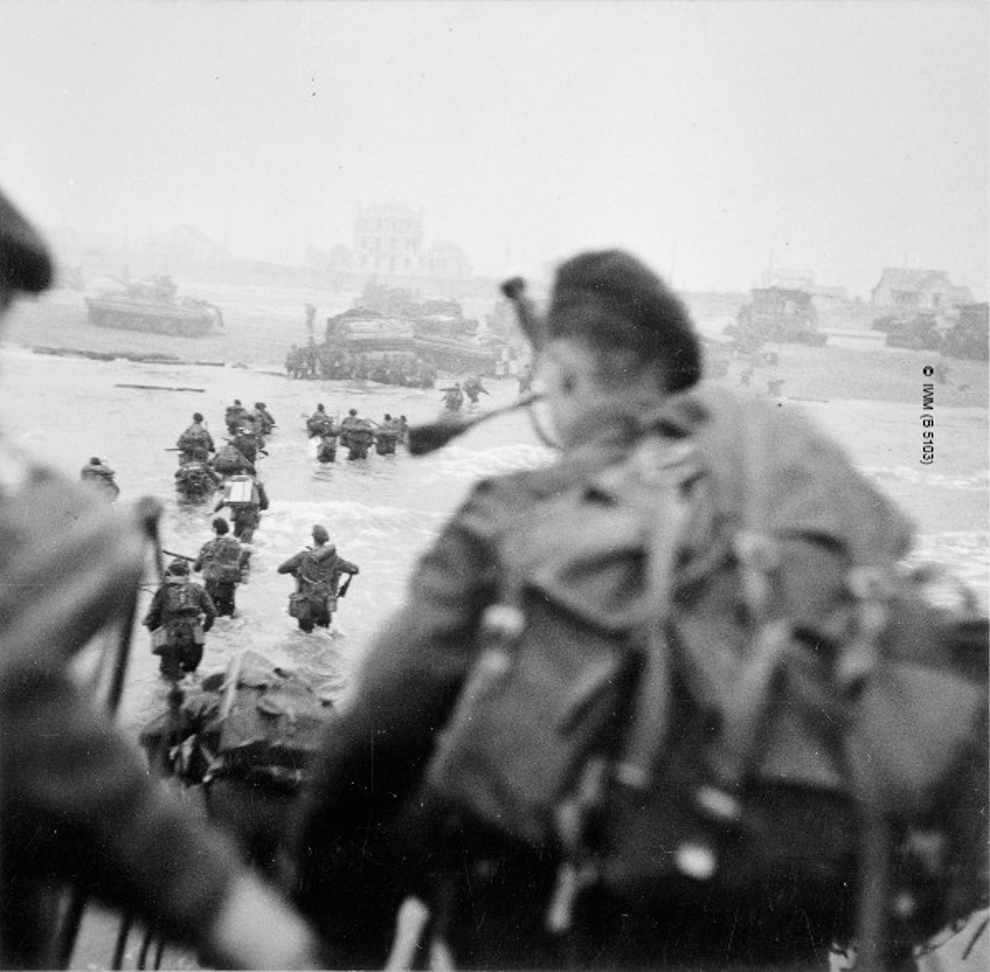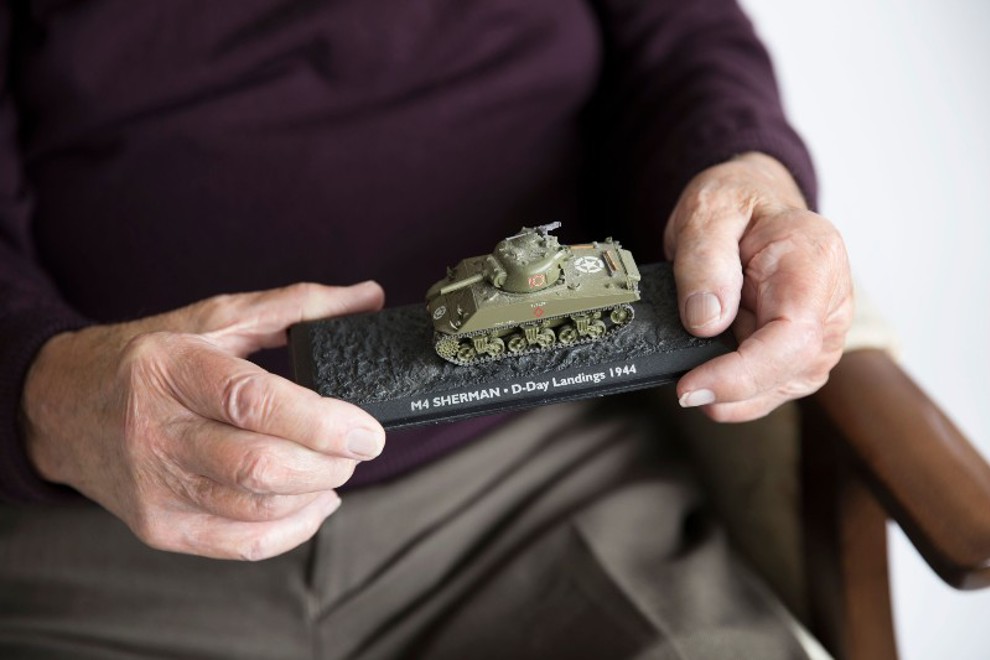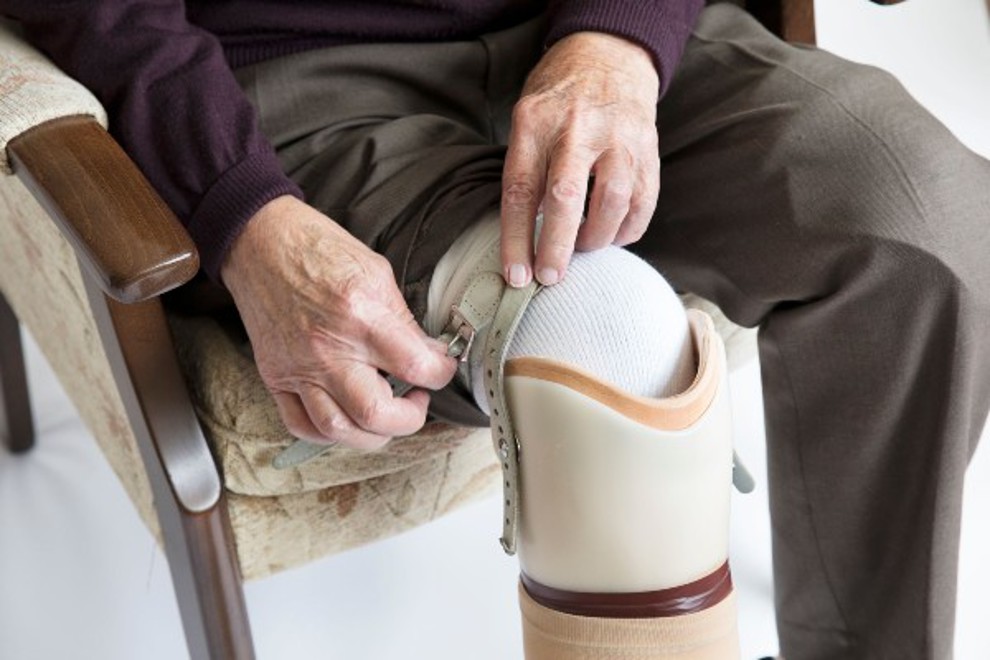The 6th June, 2024, marks the 80th anniversary of the D-Day landings in Normandy, France. With each passing year, it becomes increasingly crucial to remember and commemorate the heroic efforts of D-Day veterans who fought to liberate Europe from Nazi Germany, so their stories are not forgotten.
Recent estimates suggest that there are only a handful of British D-Day veterans still alive today. In fact, out of all our veteran Members at Blesma, only one D-Day veteran is still alive today and his name is Roy Hayward. We share his incredible story of courage and recovery later on in this article.
D-Day 80th Anniversary Events
On 6th June 2024, in Normandy, France, there will be a special 80th anniversary event at the British Normandy Memorial to commemorate the fallen.
The British Normandy Memorial holds significant importance to the British Armed Forces, as it's the only memorial in Normandy listing all the names of the 22,442 British military personnel who died on D-Day and during the Battle of Normandy.
From 21st April to 31st August 2024, the British Normandy Memorial in collaboration with Standing with Giants are displaying 1,475 silhouettes of soldiers to reflect the number of British servicemen who lost their lives on D-Day itself.
On the 6th June, throughout the UK – cities, towns and villages are encouraged to light a beacon at 9:15PM on 6th June 2024 to mark the 80th anniversary of the D-Day landings, and host their own commemorative events.
To commemorate the 80th anniversary of D-Day, we are teaming up with the Army Benevolent Fund to host "The Frontline Walk" from 2nd October - 6th October 2024, which is an epic 100km walking challenge through the D-Day landing sites in Normandy.
Donations made through The Frontline Walk will provide support to limbless and injured veterans for life, including WW2 war veterans.

What Happened on D-Day - A Timeline
Codenamed “Operation Overlord”, D-Day is considered still to this day, one of the largest military assaults in human history and the most significant victory of the Allies during WW2.
Many often wonder what the ‘D’ in D-Day actually stands for. The ‘D’ in D-Day stands for ‘Day’, which was often used as a codename for important military operations. The use of the name ‘D-Day’ indicated the first day of this particular Allied WW2 operation to liberate France from the control of Nazi Germany.
D-Day Preparations
In the months leading up to the invasion, Allied forces purposefully released misleading and false information, designed to leave the Germans thinking they were landing at Calais.
From April to June 1944, thousands of Allied aircraft dropped bombs on strategic positions in northern France, such as road networks and rail centres to cut off Normandy and make it more difficult for the Germans to transport supplies.
In preparation for the magnitude of the D-Day landings, American and Canadian troops started travelling to Great Britain in large numbers. The Allied forces then went on to take part in combat rehearsals, known as ‘Exercise Tiger’ in advance of Operation Overlord.
Despite significant preparations by the Allies, during WW2 the Germans had managed to fortify France’s coastline with artillery bunkers, land mines and dangerous obstacles, making it very difficult for the Allies to infiltrate and liberate France.


Landing on Normandy’s Beaches
D-Day was originally set for June 5th, however, due to poor weather conditions, the operation was postponed until June 6th.
Soon after midnight, paratroopers began landing in northern France, alongside a naval and aerial bombardment to take the Germans off-guard. Allied forces started landing on Normandy’s beaches around 6:30 AM.
Normandy’s beaches were tactically split into five beaches and given the code names: Utah, Omaha, Gold, Juno and Sword.
The Americans landed at Omaha and Utah, the British landed on Gold and Sword, while the Canadians landed on Juno. Over 24 hours, approximately 156,000* Allied troops successfully stormed Normandy’s beaches.

Battle of Normandy
Despite fierce opposition from the Germans, Allied forces managed to battle their way across the beaches and make their way further into Normandy. A week after D-Day, hundreds of thousands of additional Allied troops had landed on Normandy’s beaches to help with the progression of the massive military campaign.
Over the course of two months, Allied forces began to liberate towns and cities across northern France including Carentan, Bayeux, Caen, and Cherbourg. The Battle of Normandy lasted until 30th August 1944 when Paris was liberated. Allied forces went on to push German troops back into Germany, marking the close of Operation Overlord and the continued liberation of Europe from Nazi Germany.
D-Day Injuries and Losses
Even to this day, in 2024, there is not an exact figure of how many lost their lives specifically on D-Day. It’s estimated up to 5,000* Allied and up to 9,000** German troops died on D-Day. Over the course of the whole of the Battle of Normandy, estimates are that over 425,000☨ Allied and German troops lost their lives.
There were also approximately over 15,000☨ French civilian casualties, due to many homes being located in the firing line of the Normandy campaign.
It’s perhaps no surprise that there was such a huge number of casualties during D-Day, with the largest number of deaths and severe injuries taking place during the first waves of the Normandy landings.
Allied forces faced a constant onslaught of artillery and machine gun fire from the Germans – all while trying to evade land mines hidden across Normandy’s beaches. As a result, some troops suffered significant and life-changing injuries from constant artillery, sniper fire and landmines, which often resulted in amputations and lifelong PTSD symptoms.

Remembering the Veterans of D-Day
Roy Hayward
Roy Hayward is one of the last surviving veterans of D-Day. Roy was part of the Sherwood Rangers Yeomanry regiment, an elite British tank regiment who landed on Normandy’s beaches on the night of D-Day.
Shortly after D-Day, during the Battle of Normandy, Roy suffered devastating injuries to both of his legs when a shell exploded inside of his tank. As a result, both of his legs had to be amputated below the knee. Watch his inspiring story of recovery:
When I crawled down the lane and turned over onto my back, I realised that my right leg was shattered below the knee and my left foot had been blown off.
Roy Hayward
Douglas Baines
On D-Day, Douglas (Dougie) Baines was part of the Parachute Regiment assault into northern France. Alongside his comrades, they were dropped into the wrong area and had to make their way out of a treacherous bog. Eventually Dougie was captured by the Nazis, however, he managed to make a remarkable escape by cutting a hole in the floor of the train carriage and dropping out onto the railway line below.
Dougie went on to join the French Resistance. Later on during WW2, he was shot down over the River Rhine and lost his leg in the process. He was the only one out of the five-man crew to survive.
After his amputation, Dougie became a member of Blesma. As a result he was able to experience the benefits of being a member, such as receiving medical support and the companionship of fellow D-Day veterans who had also suffered life-changing injuries.

Support our work
Blesma is committed to helping its Members live independent and fulfilling lives after suffering the loss of limbs, use of limbs, sight, speech or hearing.
Since 1932, Blesma has worked tirelessly to provide practical, emotional and financial support to injured military personnel, their families and widow(er)s as they rebuild their lives.
It’s a feeling of reassurance that there is somebody [Blesma] behind me, who would not only be protecting my interests as far as pension and allowances are concerned, but also a feeling of camaraderie.
Roy Hayward
*Source: 156,000 Allied troops DDay.org.
☨Source: 420,000 Allied and German troops and 15,000 French civilians: D-DayRevisited.co.uk.
We can help
We are dedicated to assisting serving and ex-Service men and women who have suffered life-changing limb loss or the use of a limb, an eye or sight. We support these men and women in their communities throughout the UK. Click the link below to find out the different kinds of support we offer.
Get Support